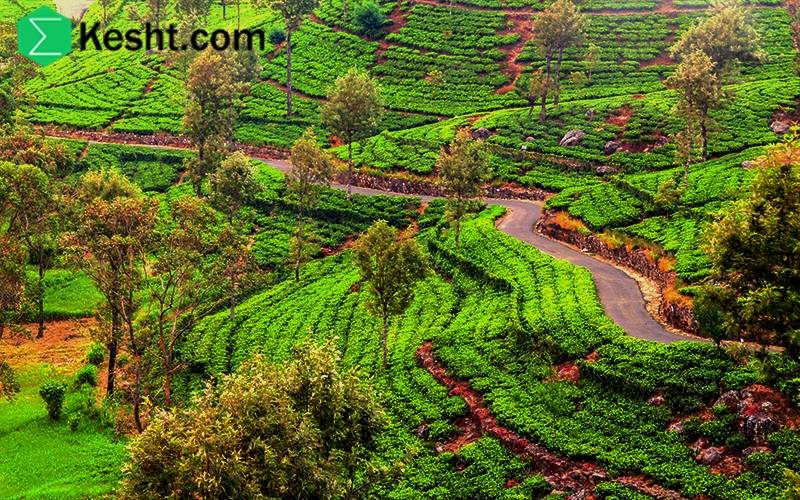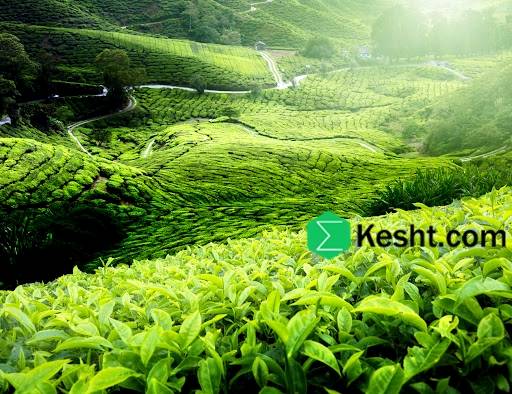### What is Iranian Black Tea?
Iranian black tea is one of the most popular beverages in Iran, typically made from black tea leaves. It is appreciated for its unique aroma and flavor, as well as its health benefits.
#### Characteristics of Iranian Black Tea:
1. **Natural Source of Caffeine**: Black tea contains caffeine, which can provide energy and help improve concentration.
2. **Antioxidants**: This tea is rich in antioxidants, which can reduce the risk of diseases and improve overall health.
3. **Preparation Method**: Iranian black tea is usually made by boiling water and adding tea leaves. Some people enjoy it with spices like cardamom or cinnamon, or with sugar and lemon.
4. **Cultural Role**: Tea holds a special place in Iranian culture and is served at many ceremonies and gatherings.
Iranian black tea, due to its pleasant flavor and numerous benefits, is a popular choice among beverages.
### Which Type of Iranian Black Tea Tastes Better?
There are several types of Iranian black tea, each with its own unique flavor and aroma. Among them, some of the most popular and flavorful varieties include:
1. **Lahijan Tea**: The most famous type of Iranian tea, known for its mild and pleasant aroma and taste. It is typically grown in northern Iran.
2. **Fuman Tea**: This tea also originates from Lahijan and has a stronger flavor and more aroma.
3. **Cinnamon Tea**: Black tea prepared with added cinnamon, offering a unique and pleasant taste, ideal for those who enjoy spicy flavors.
4. **Flavored Tea**: This type is usually made by adding flowers or aromatic herbs like rose or mint, resulting in a fresh and fragrant taste.
The choice of the best type of black tea depends on personal preference, but Lahijan tea is recognized as one of the best.
### What Flowers Enhance the Flavor of Scented Tea?
Scented tea can be made with various flowers and aromatic plants, each adding its own unique flavor and aroma. Here are some commonly used flowers for scenting tea:
1. **Rose**: One of the most popular options, it imparts a pleasant aroma and taste to the tea.
2. **Jasmine**: This flower has a unique and subtle fragrance that can make the tea very enjoyable.
3. **Thyme Flower**: With its distinctive aroma and flavor, it can enhance the tea’s scent and taste.
4. **Green Tea Flowers**: Combining black tea with green tea flowers can bring a new and appealing flavor.
5. **Sage**: This flower can strengthen the flavor and aroma of the tea, giving it a refreshing quality.
Using these flowers depends on personal preference and can make the tea-drinking experience much more enjoyable.
In addition to flowers, there are other plants that can also impart unique flavors and aromas to tea. Here are some of these plants:
1. **Mint**: One of the most popular aromatic herbs, it adds a fresh and cool taste to tea.
2. **Cardamom**: This spice gives a special aroma and flavor to tea and is commonly used in scented teas.
3. **Cinnamon**: Adding cinnamon sticks gives the tea a warm and pleasant flavor.
4. **Turmeric**: This herb, known for its anti-inflammatory properties, can add a unique flavor to tea.
5. **Ginger**: It adds a spicy and warm flavor to tea and has many health benefits.
6. **Rosemary**: This aromatic herb can add a distinct and special aroma and flavor to tea.
7. **Lemon**: Adding lemon juice or lemon peel can make the tea fresh and delightful.
These herbs can be mixed according to your taste, allowing for the creation of new and interesting flavors in tea.
### Can Dried Herbs Be Used?
Yes, using dried herbs to flavor tea is quite common and suitable. Dried herbs often retain good aroma and flavor, enhancing the appeal of your tea. Here are some dried herbs that can be used in tea:
1. **Dried Mint**: Adds a pleasant aroma and flavor to tea, creating a refreshing experience.
2. **Dried Rose**: This dried flower imparts a mild aroma and flavor to tea and has calming properties.
3. **Dried Cinnamon**: Dried cinnamon sticks provide a warm flavor and aroma to tea.
4. **Dried Ginger**: Can add a spicy and warming flavor to tea and also has health benefits.
5. **Dried Rosemary**: Has a strong and distinctive aroma that can scent the tea.
6. **Dried Thyme**: Offers a unique and delicious flavor to tea and has beneficial properties.
Using dried herbs not only helps enhance the flavor of tea but can also help preserve their beneficial properties.
### What Are the Differences Between Fuman and Lahijan Tea?
Fuman and Lahijan tea are both among the most famous Iranian black teas, but they have differences in production, flavor, and other characteristics:
1. **Cultivation Area**
- **Lahijan Tea**: Grown primarily in the Lahijan region of Gilan and recognized as one of the best Iranian teas.
- **Fuman Tea**: Also grown in Gilan, but in the Fuman area, which has its own unique climatic and soil characteristics.
2. **Flavor and Aroma**
- **Lahijan Tea**: Has a mild and pleasant flavor, often recognized as a fragrant tea.
- **Fuman Tea**: Has a stronger flavor and more aroma, typically appealing to specific enthusiasts.
3. **Production Process**
- **Lahijan Tea**: Usually produced using specific processes that help preserve its aroma and flavor.
- **Fuman Tea**: May be produced using various methods that can affect the final taste.
4. **Price**
- **Lahijan Tea**: Generally has a higher price due to its superior quality.
- **Fuman Tea**: Usually has a more affordable price and is recognized as a more economical option.
These differences can influence your choice, but ultimately it depends on your personal taste.
### Do Fuman and Lahijan Tea Differ in Caffeine Content?
Yes, Fuman and Lahijan tea may have differences in caffeine content, although these differences are usually minor.
#### Factors Affecting Caffeine Levels:
1. **Type of Leaf**: The type of tea leaves and their harvesting stages can significantly impact the caffeine content.
2. **Production Process**: Drying and processing methods can also influence the caffeine level in the tea.
3. **Brewing Time**: The longer the tea is brewed, the more caffeine is extracted.
#### Comparison:
- **Lahijan Tea**: Typically, due to the high quality of its leaves, it may contain more caffeine.
- **Fuman Tea**: May have slightly less caffeine compared to Lahijan, but this difference is usually not significant enough to greatly impact the tea-drinking experience.
Ultimately, if caffeine content is important to you, it’s best to pay attention to the type of tea and the brewing method.



